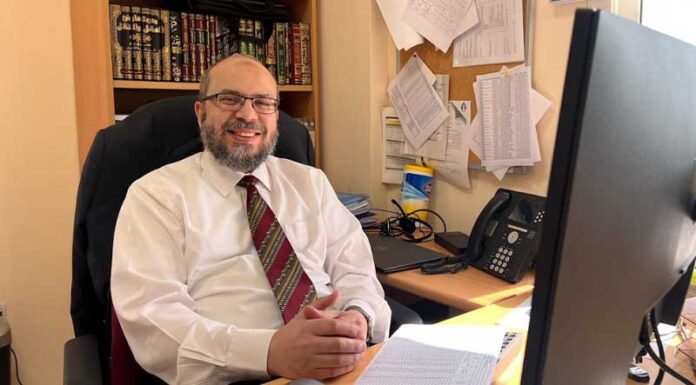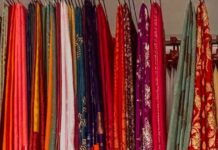
By Hoor Ibrahim
Professor Ahmed Ali is the Head of the Department of Arabic and Translation Studies at the American University of Sharjah. With a profound passion for linguistic and cultural exploration, Professor Ali is currently conducting research on the language spoken by the inhabitants of the Faifaa Mountain in Southern Arabia.
What sparked your interest in studying the language of the inhabitants of the Faifaa Mountain in Southern Arabia?
My interest in studying this language was owing to several factors. The Faifaa Mountain region is vastly understudied, with only sporadic information available about it. Encountering individuals from this area and observing their communication in a somewhat unusual language, despite being Arabs themselves, piqued my curiosity. During my years of work in Southern Arabia, I had a colleague from the Faifaa region, but I never heard him speak the way some Faifis do. When I inquired about this, particularly given his mention that his father was a poet who composed poetry in their local dialect, he described it as a “cursed language.” He made it sound like the language of the Devil. Although his choice of words intrigued me, I remained uncertain as to why he characterized it in such a manner. Upon further investigation into this “language,” I discovered its rich cultural heritage and unique linguistic characteristics, rendering it an intriguing subject for linguists and anthropologists alike.
You mentioned hearing people speak Faifi and your work colleague commenting about it. Could you elaborate on how you got to know about this obscure language?
I worked at some stage of my life as a professor at King Khalid University in Saudi Arabia where I taught translation and Linguistics. With the university being in Abha, in the Asir region, it was not too far from the Faifaa Mountain region. This provided me with a unique vantage point to encounter various linguistic and cultural nuances of the surrounding areas. During my time at KKU, I also taught students from diverse backgrounds, including some from the Faifaa Mountain region itself. Through interactions with these students, I became increasingly interested in the language spoken in their ancestral homeland. Curiosity and a genuine interest in understanding the linguistic fabric of the region prompted me to try to investigate the Faifaa language further. I also had a South African colleague who shared some interest in the literary production of the region. While our initial plans to conduct research together did not materialize, my fascination with the Faifaa language continued to grow. I ended up taking on the project much more seriously and academically after moving to AUS.
Are there any existing linguistic resources or databases that you’re utilizing in your research?
Not exactly. While Faifi may be considered an obscure language, there are still valuable resources available that contribute to our understanding of its linguistic features and cultural context. However, I must state first that there are rarely any serious academic publications, linguistic studies and ethnographic works that provide insights into the phonology, grammar, vocabulary, and sociolinguistic aspects of the Faifaa language. Accordingly, there are no scholarly works to offer detailed analyses and documentation of the language or works that draw on fieldwork conducted by linguists and anthropologists in the region. This makes getting reliable documented information a very difficult task. Based on this you can say that in the presence of a dearth of research work that any researcher would have to rely on physically going to the region, speaking to its people, recording and documenting their speech himself. Living for a substantial period of time among the locals would also be a great advantage. But most importantly, Faifaa has produced a number of academics who have recently started speaking about the language of the region and its history and culture. They utilized platforms such as YouTube and Facebook to post their videos addressing those aspects. Such individuals possess firsthand knowledge of Faifaa. Personally, I made a few trips to Faifa myself. I was accompanied by a local friend who graciously acted as my host and guide and his accounts provided wealth of firsthand information. The experience was of phenomenal importance to my research work in this area.
What implications do you hope your research will have for our understanding of linguistic diversity in the region?
I aim to contribute to a deeper understanding of linguistic diversity in the region and its broader implications. Faifi, like many indigenous languages, is at risk of extinction due to various social, economic and cultural factors. By documenting and studying Faifi, my research can raise awareness about the importance of preserving endangered languages and the unique cultural heritage they represent. This may lead to initiatives aimed at language revitalization and community-driven efforts to maintain linguistic diversity. Additionally, language plays a central role in shaping cultural identity and preserving heritage. By examining the linguistic features of Faifi and its connection to the cultural practices and traditions of the Faifaa Mountain inhabitants, my research can provide insights into the rich cultural diversity in the region. Studying Faifi can also contribute to our understanding of linguistic typology, language contact phenomena, and the historical development of languages in the region. Comparative studies with related languages may reveal commonalities and differences, shedding light on broader linguistic patterns and processes. At this stage in my research, I can categorically say that in spite of the differences between Faifi and modern Arabic, it is indeed a dialect of an Arabic that is older than what we now have, but still Arabic though.
Can you describe the historical development of the Faifaa language and its origins within the broader context of Arabic dialects?
The Faifaa dialect is part of the southwestern Arabian dialects, influenced by ancient Arabic forms preserved by the region’s geographical isolation. It reflects a rich linguistic heritage, potentially including pre-Islamic elements. Some say that it may have Himyarite origins. Himyar is the last of the pre-Islamic kingdoms that existed in Yemen. It annexed under its rule all previous kingdoms such as Saba’, Ma’in and Hadramout. One of the latest natives was Wa’il ibn Hujr who met the Prophet Muhammad, peace be upon him, with a Yemeni delegation, and accepted Islam.
Has the Faifaa language been influenced by other languages?
Given its location and historical trade routes, the Faifaa dialect may have absorbed words and phrases from African, Asian, and other Arabian languages, enriching its vocabulary. But this is only an assumption. But the evidence that exists points out to classical Arabic. Instead of the definite article (al) in Arabic, they use (im). They say imjabal (the mountain); imkitab (the book). This feature is still used till today in our everyday speech. We say /imbāriħ/ which is البارح, meaning yesterday. This is an old Arabic dialect called الطمطانية.
What efforts are being made to document and preserve the Faifaa dialect, and what challenges do you face in this work?
Efforts to document and preserve the Faifaa dialect should include recording oral histories, compiling dictionaries, and academic research. However, very little is done in any of these areas. Challenges include the dialect’s oral tradition and the dominance of Modern Standard Arabic in formal settings. Additionally, young faifis no longer use their forefathers’ language, as they communicate in Arabic of today instead. Also, the school system does not support old dialects of this nature.
Within the Faifaa region itself, are there any notable variations or sub-dialects? How do these variations manifest?
Within the Faifaa region, there might be slight variations in dialect depending on factors like specific villages, family lineage and interaction with neighboring regions. But much more research is required to make an informed determination.
How is the Faifaa dialect perceived within the broader Arabic-speaking community? Are there any social or political factors that affect its status?
The Faifaa dialect is a marker of regional identity and perhaps pride. However, in broader contexts, speakers often switch to Modern Standard Arabic or other regional dialects for wider communication or formal purposes.
Are there resources or programs available for people who wish to learn the Faifaa dialect? What are the challenges in teaching this dialect?
Resources for learning the Faifaa dialect are extremely limited, no more than personal initiatives. Teaching the dialect formally poses challenges due to its primarily oral tradition and lack of standardized orthography.
What is your perspective on the future of the Faifaa language? Do you believe it will continue to evolve, or is it at risk of being overshadowed by more dominant dialects or languages?
The future of the Faifaa dialect, like many regional languages, depends on the balance between cultural preservation and modernization. While it faces challenges from the dominance of Modern Standard Arabic and global languages, there’s a growing awareness of the importance of preserving linguistic diversity. However, most likely as generations progress not learning it, and older generations perish, this dialect will only exist in research papers.

















